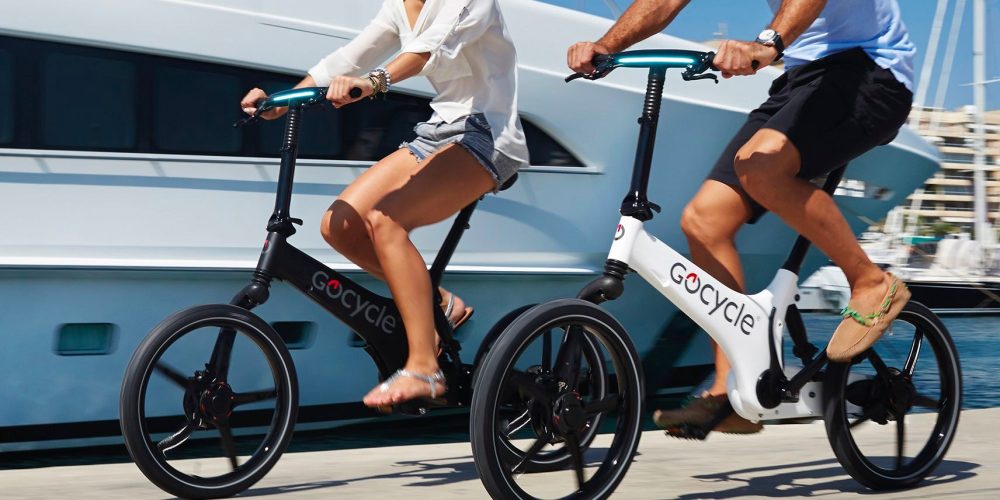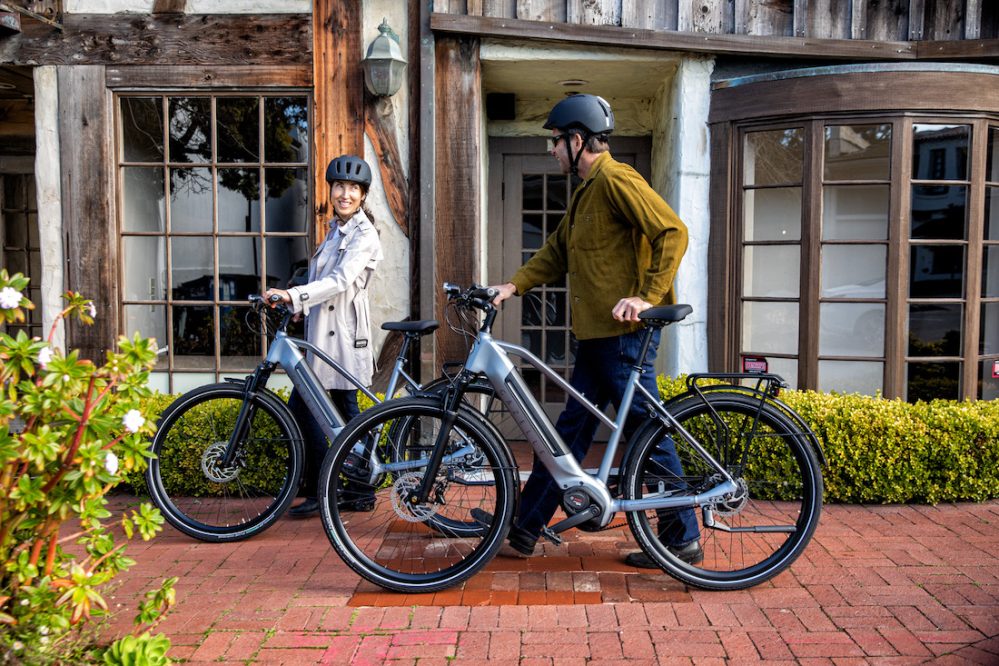
Hot-rodding, hacking, or e-bike tampering – call it whatever you’d like. But Europe’s major electric bicycle companies are doing everything they can to prevent riders from finagling more speed from their e-bikes.
Most e-bike companies in Europe have been against the practice of e-bike hacking for as long as they’ve sold e-bikes. But now the industry is getting more organized about it.
Under the Confederation of European Bicycle Industry (CONEBI), 15 national bicycle industry associations in Europe and 68 companies have signed onto an industry-wide commitment to prevent owners from hacking their e-bikes for more speed and power.
The signatories include major e-bike motor manufacturers such as Bafang, Bosch, Brose, and Shimano.
Other large manufacturers of electric bicycles that also signed onto the letter include Giant, GoCycle, Haibike, Gazelle, Riese & Müller, Specialized, Tern, and Trek.

As explained in the letter:
The members of CONEBI speak out against any kind of manipulation of e-bikes and e-bike drive systems, e.g. to increase the performance or the maximum supported speed. Riding manipulated e-bikes on public roads may not only lead to technical problems but also result in serious legal consequences. Tampering kits and other types of manipulation can damage the drive system as well as the bike itself. Riders risk losing their guarantee and invalidating their warranty claims. If an accident occurs with a tampered e-bike, it may result in high liability costs as well as criminal prosecution.
As part of the commitment to preventing e-bike hacking, the signatories to the letter committed to taking a number of steps.
The group committed to re-evaluating current anti-tampering standards to determine if they were still “fit for the purpose” as well as to continuously work on “improving e-bike drive systems to make tampering more difficult.”
The issue of e-bike hacking in Europe receives greater attention due to the much lower speed and power limits for electric bicycles compared to other areas of the world.
In Europe, most e-bikes are limited to power levels of 250W and speeds of up to 25 km/h (15.5 mph).
Most untrained riders and even many children can generate 250W of muscle power when pedaling, and the slow speed limit of e-bikes in Europe means that many e-bike riders are routinely passed by pedal cyclists on fitness/road bikes.
In practice, most European motor manufacturers actually exceed the 250W power limit because it is difficult to measure and enforce. Top-end motors from companies like Bosch can actually produce well over 250W of power in their peak output settings. Speed is much easier to measure and enforce on the side of the road, and thus almost all European electric bicycles are limited to sluggish 25 km/h (15.5 mph) speeds.
Speed pedelec classes for 45 km/h (28 mph) e-bikes exist in some areas in Europe, but they often require the faster e-bikes to be registered, carry a license plate, and disallow them from using bicycle lanes. Such restrictions remove many of the advantages of e-bikes and have led to a tiny fraction of e-bikes in Europe exceeding the 25 km/h (15.5 mph) limits.

This has resulted in many riders seeking out and discovering ways to increase the speed of their e-bikes. We’ve even covered products that make this is a simple and easy task.
Many companies have already begun cracking down on the practice, and Bosch even introduced an update that would lock the bike’s motor if the rider tried to repeatedly hack it for more speed. Some countries, such as France, have made hacking e-bikes an offense that could be punishable by jail time.
While many riders are simply looking for more speed to get where they’re going faster, safety concerns regarding faster e-bikes have led to this pushback from the industry. Pedestrians have been hit and killed by hacked e-bikes that were traveling faster than manufacturers intended.
In addition to the tragedy of such events, manufacturers fear that such instances could eventually lead to increased regulation of electric bicycles or classification as motorcycles instead of bicycles.
Steps such as this self-commitment letter are an indication that the industry is now becoming even more serious about self-regulating to prevent such measures in the future.
Electrek’s Take
As someone who often rides e-bikes in the US and gets to enjoy the 20 mph and 28 mph (32 km/h and 45 km/h) speed limits of Class 2 and Class 3 e-bikes, I feel the pain of European e-bike hackers, but I also certainly understand the safety ramifications of faster vehicles.
The issue is that this isn’t a matter of e-bikes, it’s a matter of fast bikes. Period. A common argument against e-bikes is that they weigh more and thus a potential crash is more dangerous.
A typical battery and motor add around 5-6 kg to a bike. So I don’t buy the argument that we need to keep e-bikes slower because they weigh more, especially when the weight difference is somewhere around 5-8% of the entire rider/bike system. That 5 kg can be the same as a pedal bike rider who can’t exercise self-control in the candy store. If anyone really believed in the merit of that argument, they’d advocate for selling a scale with e-bikes and force heftier riders to use a slower speed limit. The variation in human weights is simply much larger than the variation in bicycle/e-bicycle weights.
What I do think is that there should be bicycle speed limits in mixed-use areas, regardless of the type of bike. Pedestrians and cyclists shouldn’t really be forced to share paths anyways, but since many cities are forced to retrofit their non-car transportation systems, mixed-use paths are an inevitable result for the time being. Thus, bikes should simply have speed limits in high traffic areas of cities to protect pedestrians. Post reasonable speed limits for bikes and ticket anyone who exceeds them. An e-bike might be perfectly safe traveling on the side of the road at 25 mph, but it would make sense to force the rider to slow down to half that speed in an area where pedestrians and cyclists are forced to share the same paths.
In my opinion, location-based bicycle speed limits make much more sense than e-bike power limits. We don’t force car manufacturers to limit horsepower to 70 hp. We tell car drivers not to travel faster than 70 mph. Or 35 mph. Or whatever the safe speed is for a specific area. And that’s exactly the point – safety is relative. Creating a single power or speed limit that is built into the e-bike makes no sense if the argument is safety. Why not take a real step towards safety and actually put smart restrictions in place that make a larger impact on the safety of riders and pedestrians.
As an added bonus, tickets for hooligan riders that exceed the safe speed limits in high-traffic areas can be issues and the money put towards building safer cycling infrastructure.
Now that’s a plan.
Subscribe to Electrek on YouTube for exclusive videos and subscribe to the podcast.
Author: Micah Toll
Source: Electrek



